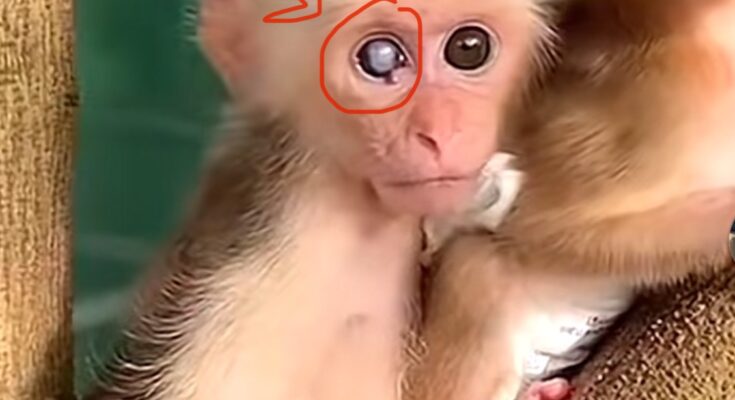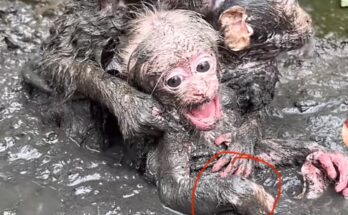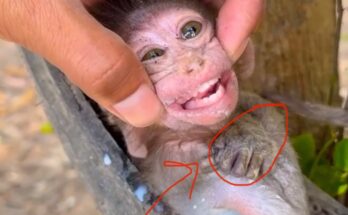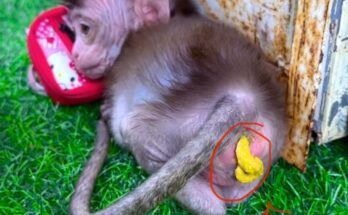In a remote forest near a rural village in South Asia, a tragic but avoidable case of animal neglect unfolded — one that highlights the importance of timely medical care not just for humans, but for wildlife as well. A young monkey, part of a troop often seen scavenging near the village outskirts, had been suffering from an eye problem for several months. Left untreated, the condition eventually caused irreversible damage, resulting in the near-total loss of vision in one eye.
Locals had noticed something was wrong. The monkey’s eye appeared swollen and partially closed, with signs of infection and discomfort. It often lagged behind its group, bumping into obstacles and showing difficulty navigating familiar terrain. Despite these visible symptoms, no effort was made to contact animal welfare authorities or seek medical intervention. By the time help finally arrived, the damage was done.
Veterinarians who later examined the monkey suspected that the issue might have started as a minor injury or a common infection, such as conjunctivitis or a corneal ulcer — both of which are treatable if addressed early. However, without intervention, the condition had progressed into severe ocular trauma and possible retinal damage. The monkey, still young and otherwise healthy, now faces a lifetime of partial blindness.
This case is more than just a single tragedy — it reflects a broader issue in many parts of the world: the lack of awareness and infrastructure for wildlife healthcare. Monkeys and other wild animals that live near human settlements often suffer injuries, infections, or diseases that go unnoticed or ignored. In some areas, even when concerned individuals wish to help, they don’t know who to call or how to access veterinary care for wild animals.
The consequences of untreated medical conditions in animals are profound. Not only do they suffer physically, but their survival and social dynamics are affected. In monkey troops, individuals with disabilities often struggle to find food, avoid predators, or maintain their place in the social hierarchy.
There is an urgent need for better education around animal welfare, especially in communities that live in close proximity to wildlife. Small steps — such as reporting an injured animal, supporting local wildlife NGOs, or learning basic animal first aid — can make a significant difference. Governments and conservation organizations must also work together to create accessible, rapid-response systems for injured or sick wild animals.
In the case of this monkey, it is too late to reverse the damage. But its story serves as a powerful reminder of the responsibility humans carry in a world increasingly shared with wildlife. Timely action, even a simple phone call, could mean the difference between recovery and lifelong disability.



